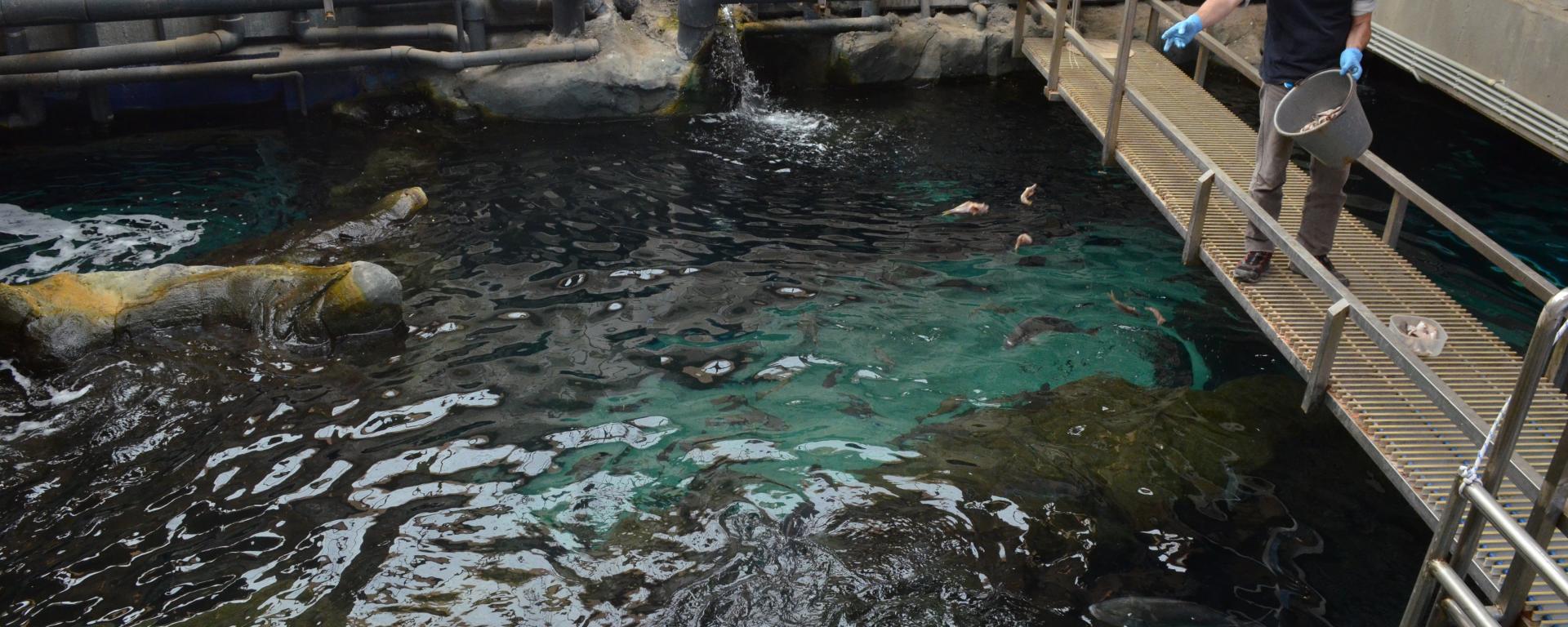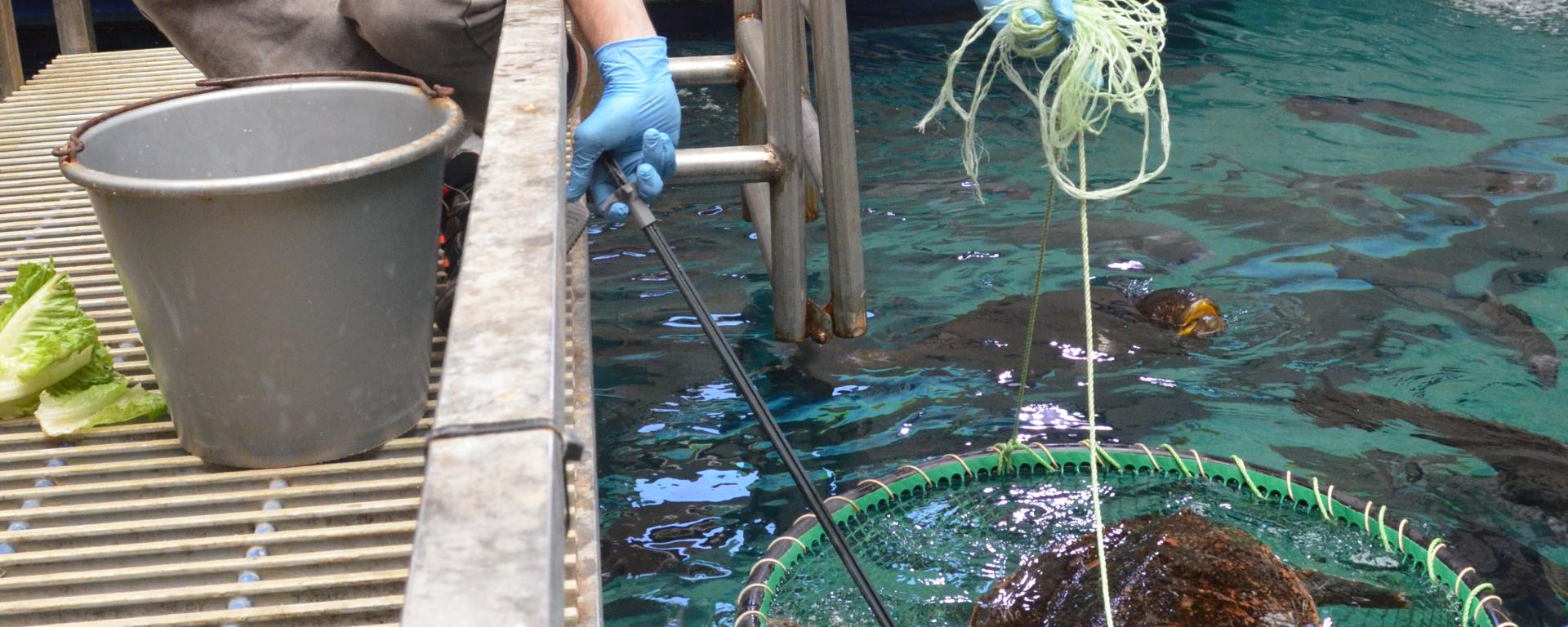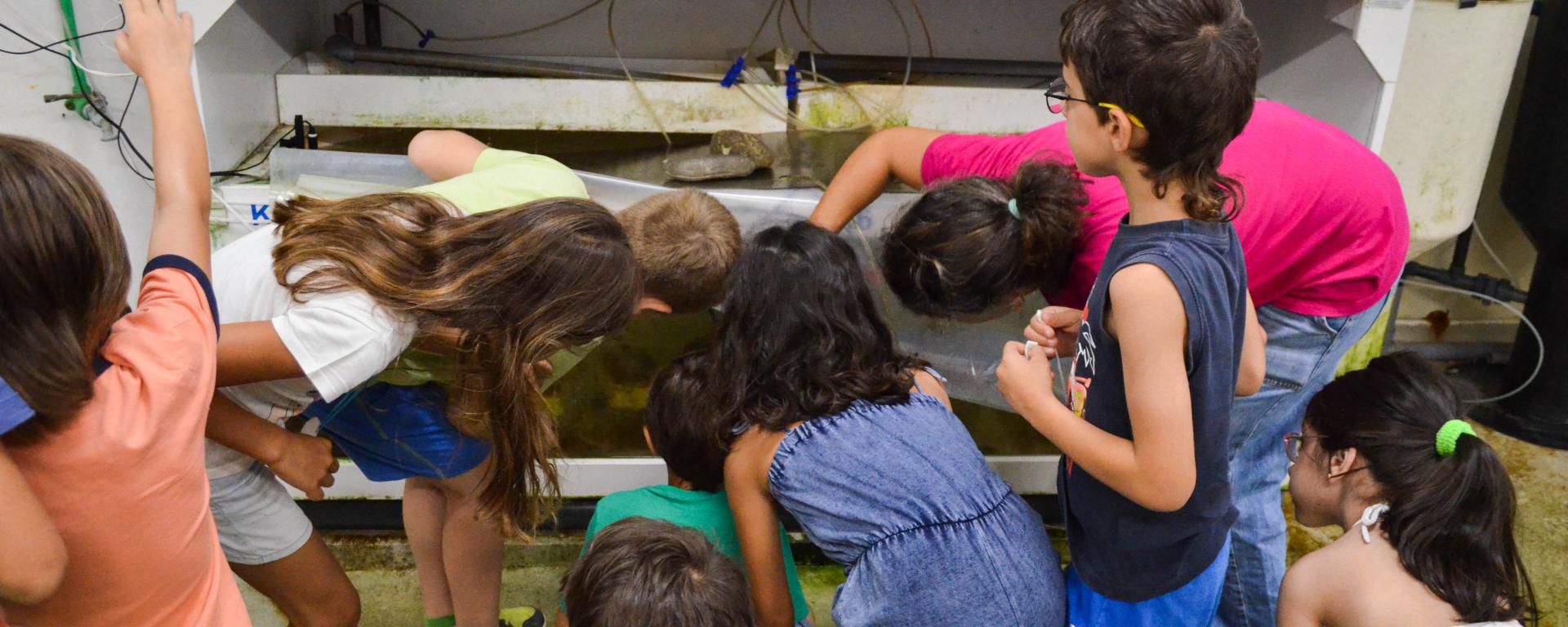CRETAquarium Behind the Scenes
(NOT AVAILABLE UNTIL FURTHER NOTICE)
Every large aquarium that preserves and exhibits thousands of different organisms is a complex of buildings, mechanic and research infrastructures. At the Aquarium of Crete, the areas that support its daily operation and its behind the scenes preservation areas extend to 2600sqm. A very large part of this infrastructure is dedicated to quarantine areas - an aquarium within the aquarium. These tanks serve and combine different aims and targets, such as the adaptation of the animals, their de-worming, development to an appropriate size and the growth of stocking fish, the completion of the life circle for some animals in order for the needs of the exhibition to be ensured (e.g. jellyfish), the production and preservation of life feeds (phytoplankton, zooplankton, mussels, see weed) and the observation of organisms for scientific reasons.
The diet of the animals is prepared daily, a variety of feeds that consists of mussels, prawns, squids, a variety of fish, industrial feeds based on the species’ requirements. The feeding procedure is performed by the appropriate staff of the Aquarium through the especially designed areas that serve the tanks. A process of particular importance is to ensure the maintenance of large carnivorous predators that coexist and compete for food pieces. Expert staff controls the quantity each animal consumes. It is an impressive procedure that visitors may observer daily during particular times and realize the different behaviour and competition of the carnivorous predators, such as sharks.
The natural sea water of the aquarium comes from a drilling 200m in depth, with consistent salinity and temperature ensuring valuable energy saving. The largest quantity of the water, after it is filtered, it returns to the tanks of the aquarium and only a small percentage of it is renewed. The remaining quantity of the water after going through a special process, is led to a drain and from there to the open sea, 400m away from the shore.
Each tank is autonomous as far as the water purification is concerned. This purification is supported by mechanical filters that retain large debris from the water and by biological filters that retain various dangerous ions, as the water goes through layers of natural porous material (coral sand). The water purification here focuses on the retaining of substances toxic to the animals, such as ammonia (an animal metabolic product) or other derivatives of nitrogen and it is accomplished with the aid of bacteria which feed and grow with consumption of such ions.
Also, almost every tank demands a different water temperature as different species live in it. In this way, hot and cold water pipes of planned length and cross-section are used to achieve the threshold temperature chosen in accordance with the requirements of biocoenosis hosted in each tank. Other facilities that take over a large part in the basements of the Aquarium are the pumping plant, the power room, the filters' area, the storage and feeds preparation areas.




